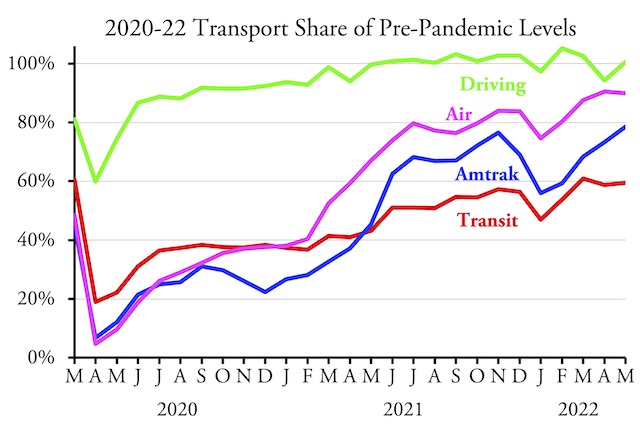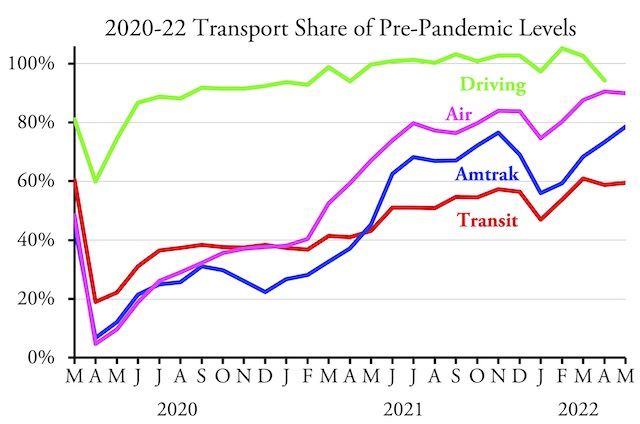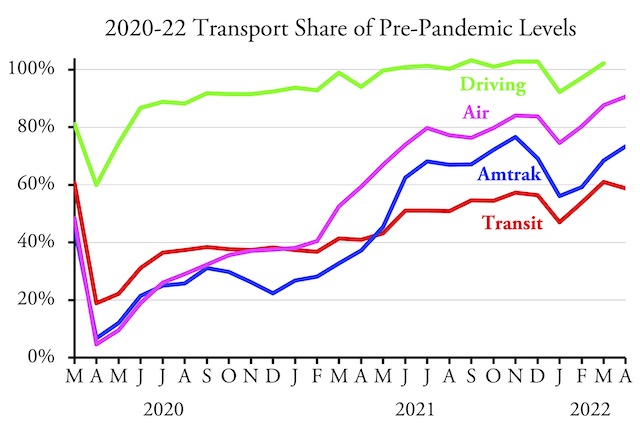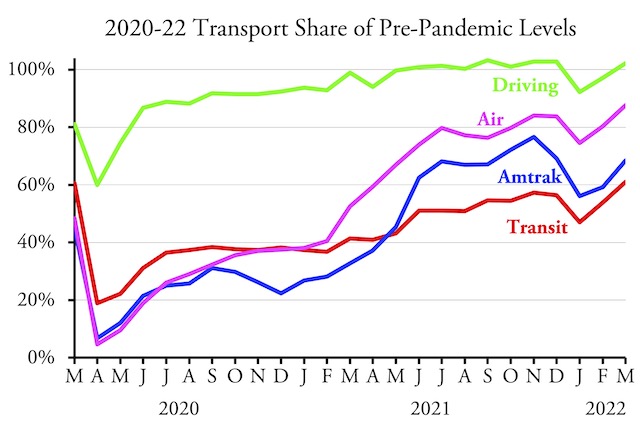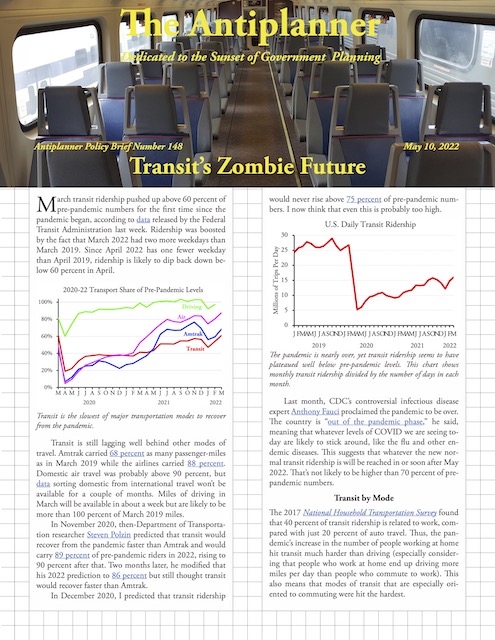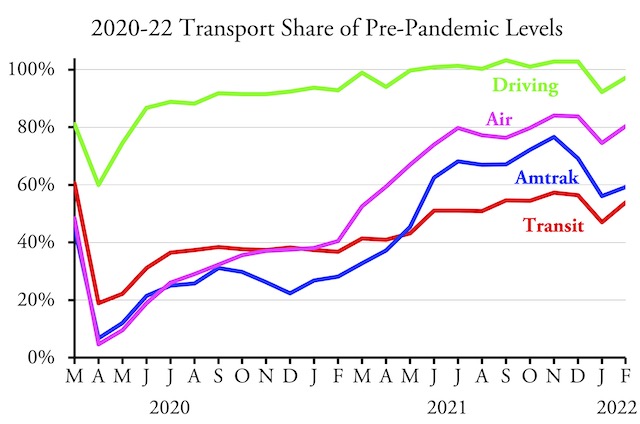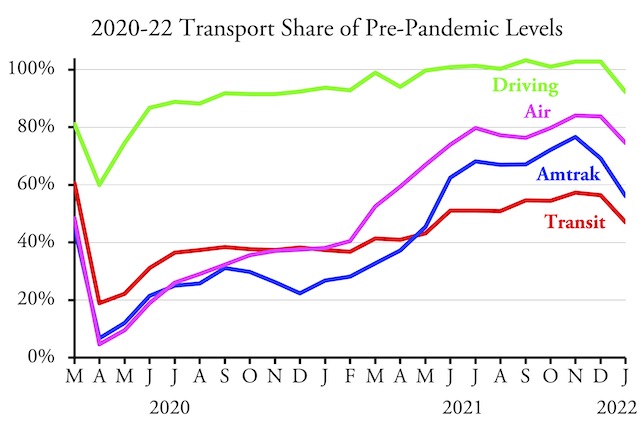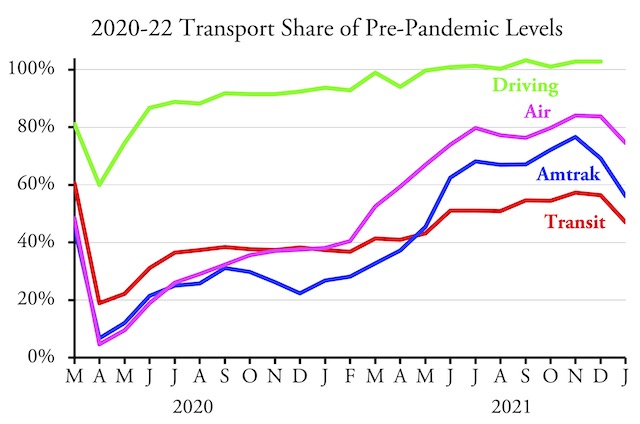Americans drove almost 288 billion miles in May 2022, compared with 286.4 billion in May 2019, according to data released yesterday by the Federal Highway Administration. This represents a 0.5 percent increase over pre-pandemic levels. Considering that regular gasoline prices were under $3 a gallon in May 2019 and around $4.50 a gallon in May 2022, this suggests that high fuel prices aren’t leading many Americans to abandon autos for transit or other modes.
While transit ridership appears to have plateaued at 60 percent of pre-pandemic levels, miles of driving have exceeded pre-pandemic numbers for most of the last year.
Transit advocates are increasingly promoting free transit for everyone, regardless of income, as a solution to transportation equity issues, when in fact transit practically irrelevant to 95 percent of American workers (including low-income workers) before COVID, and even more since. The real inequity is in low automobile ownership among low-income households, and that inequity can be reduced without giving everyone, regardless of income, free cars.

